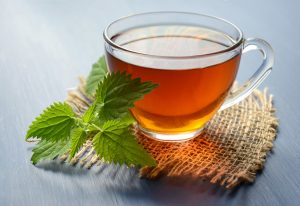High blood pressure is a chronic disease that is affecting more and more people every day around the world, in all age groups. What was once linked to age, since it occurred mostly in elderly people, is now being seen as heavily influenced by poor lifestyle habits, which are becoming a main factor in the disease’s development. As a result, the number of young people and even children being diagnosed has sadly increased. According to research by the Brazilian Society of Hypertension, in Brazil alone there are more than 17 million people with hypertension, and some don’t even realize they have the disease or know the risks involved.
What Is High Blood Pressure?
The term high blood pressure refers to blood circulating at higher than normal pressure, which overloads the heart’s job of pumping and distributing blood throughout the body, creating a potentially fatal risk. It is one of the leading causes of stroke (CVA), heart attack, aneurysm, and even kidney failure. That’s why it’s important to have regular medical check-ups where your blood pressure will be checked. In case of any changes, you may be referred for further testing to properly monitor your blood pressure and determine whether it is truly high or just a temporary spike. In some cases, it is possible to manage high blood pressure with natural methods, helping to maintain healthy levels. But in others, medication is the only treatment option, so always speak with your doctor.
Top Teas to Lower High Blood Pressure
Thanks to the wisdom of our ancestors and advances in medicine—who now test and confirm the effectiveness of various natural remedies and treatments—we can turn to alternative treatments, such as lifestyle and natural methods, as possible ways to manage or solve the problem before resorting to medication, which can sometimes have side effects.
Garlic Tea
Garlic, which is used daily in meal preparation in most households, is more than just a simple seasoning. In addition to making dishes taste better, it is very effective in fighting various diseases and infections. Experts say to obtain its benefits, you need to consume between 1 and 3 garlic cloves per day. The benefits of garlic are increased when it is chopped or crushed about 10 minutes before cooking. This waiting period increases the amount of allicin, the main compound responsible for garlic’s beneficial effects. It helps cure colds, lowers cholesterol, is a great anti-inflammatory, boosts immunity, and has many other benefits, including helping to control high blood pressure. To use garlic as a tea, simply boil a cup of water with 1 garlic clove; when it boils, turn off the heat and let it cool. The garlic can be whole, chopped, or crushed when preparing. Strain and serve! If you have trouble drinking garlic tea plain, you can sweeten it to taste. 
Lemon Balm Tea
Lemon balm, also known as melissa, lemongrass, citronette or simply balm, is well known for its calming effect, but is also used to treat digestive problems. Easily found in supermarkets as tea bags, it is also available at health food stores, farmers’ markets, or can be easily grown in gardens or even pots, since it grows quickly and is easy to care for. Because of its calming effect, it helps improve sleep quality, relieves headaches, soothes menstrual cramps, promotes a sense of well-being, and even helps control blood pressure levels triggered by daily stress. To make lemon balm tea, just boil 1 cup of water and add 1 tablespoon of lemon balm leaves, strain, cool, and drink. If desired, you can sweeten it to taste with sugar or honey.
Tea Made from Potato Peels
The potato, commonly called English potato, is a food eaten all around the world and is used in thousands of dishes. Alone as mashed potatoes or combined with meat, poultry, soups, or pasta, it is rich in carbohydrates, B6, and vitamin C, as well as containing potassium, iron, calcium, phosphorus, and starch. It’s delicious, but should be eaten in moderation, especially when fried, due to its high calorie content. Among potato’s benefits are relief from constipation and controlling blood glucose levels, thanks to its fiber. It supports the nervous system thanks to vitamin B6 and also improves athletic performance. What few people know is its beneficial effect for people with hypertension, especially as potato peel tea. Peel the potato and boil the peels for 20 minutes, strain, let cool, and drink afterwards. It is recommended to drink at least 2 cups per day, preferably unsweetened. The taste of potato peel tea is quite mild, so there’s no need to sweeten it.
Lemon Tea or Water with Lemon
Lemon is not only rich in vitamin C but also has other health benefits like its antioxidant action and improving the flexibility of blood vessels, which helps control high blood pressure. It also aids digestion and helps cleanse the body due to its diuretic effect, balances the body’s pH, stimulates the immune system, hydrates the body, and assists with weight loss. To prepare for these purposes, warm a glass of water and squeeze the juice of half a lemon into it, stir, and it’s ready to drink. The ideal is to drink it every morning on an empty stomach. All the teas mentioned above are natural suggestions for high blood pressure, but only for mild to moderate cases. None of them should replace prescribed medication or be used as the sole method to manage high blood pressure. We must warn of the risks and the importance of proper treatment for the disease, respecting all medical recommendations for blood pressure control. If you have questions or symptoms, consult your doctor or go to the emergency room immediately! Photo: Mareefe











